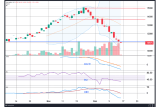
China’s recent stimulus package, introduced by the Politburo, focuses on stabilising its economy through measures such as reviving the property market, increasing infrastructure investment and easing monetary policies. These actions are aimed at boosting domestic growth in the face of economic challenges, though the details of the stimulus remain vague, and its full impact is uncertain.
Key aspects of the stimulus measures
Property market support
The Chinese government is focusing on stabilising the troubled property sector by lowering borrowing costs and relaxing rules for purchasing second homes. However, rather than encouraging new construction, the emphasis is on completing unfinished projects. This may limit new demand for steel and construction materials.
Monetary easing and infrastructure investment
The People’s Bank of China has lowered interest rates to stimulate credit growth, which could support local government spending on infrastructure. This investment in public works and transportation could increase demand for bulk commodities, such as iron ore and coal, which would benefit the overall dry bulk shipping market.
Impact on Japan’s shipping market
For Japan’s shipping industry, particularly shipowners with dry bulk carriers, China’s stimulus presents a mix of opportunities and risks. The most immediate effects are likely to be seen in the bulk shipping sector, which could experience both short-term boosts and lingering uncertainties.
Short-medium term increase in demand for (larger) bulk carriers
SSY’s Global Head of Research Roar Adland noted “the potential for a short-term rise in industrial activity due to government spending aimed at meeting China’s 2024 GDP target of 5%, could result in increased shipping activity in the fourth quarter of 2024”.
China’s focus on infrastructure investment, even though specifics are still unclear, is expected to generate demand for raw materials such as iron ore and coal, which are transported mainly by larger vessels (panamaxs, capesizes, newcastlemaxes). Japanese tonnage providers, particularly those with larger bulkers getting redelivered in the medium term, could benefit from this higher demand and potentially higher charter rates.
Uncertain long-term outlook?
Despite the positive short-term outlook, the longer-term impact remains uncertain. The property sector, a key driver of steel demand, is being stabilised but not actively expanded, limiting the potential surge in raw material consumption. Moreover, China’s economic recovery is dependent on more comprehensive reforms, particularly in the property market, which may take time to materialise. Vessels should see fluctuating demand depending on how effectively China’s stimulus measures translate into sustained economic growth.
Further opportunities for shipyards?
With China prioritising infrastructure development, demand for bulk carriers is likely to increase, leading to more inquiries at Japanese shipyards. Right now, shipyard capacity is limited, with order books filled until mid-2028, and rising market confidence could push prices even higher. However, there is a potential risk: if China’s infrastructure issues are resolved faster than expected, smaller private shipyards in China could re-enter the market. This could increase competition for Japanese shipyards, driving down newbuilding prices and reducing profit margins. Nevertheless, we see this as a smaller risk, as China’s housing credit challenges make it difficult for new shipyard entrants to secure refund guarantees from major Chinese banks.
Global shipping market considerations
Beyond the China-Japan shipping relationship, the overall sluggish global economy (particularly in Europe and the U.S.), could put a lid on the overall global demand for smaller bulk carriers as the commodities carried are more closely linked to manufacturing and industrial production. This would dampen some of the potential benefits from China’s stimulus for Japanese shipowners who operate mainly smaller bulkers.
Conclusion
China’s stimulus measures offer some positive short-term prospects for Japan’s shipping market, especially for owners of larger dry bulk carriers. Increased infrastructure spending and stabilisation of the property market in China could lead to higher demand for raw materials, driving up shipping volumes. However, the longer-term impact remains uncertain due to the fragile nature of China’s recovery, especially in the property sector, and the competitive pressures from Chinese shipbuilders. It is prudent for Japanese shipowners and shipyards to remain cautious but optimistic, keeping an eye on further developments in China’s economic policies.
By SSY Japan.
Articles
You may also be
interested in
View allGet in touch
Contact us today to find out how our expert team can support your business















